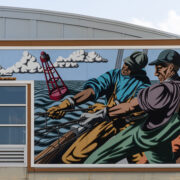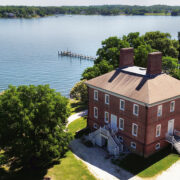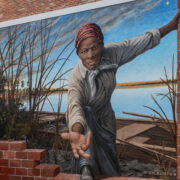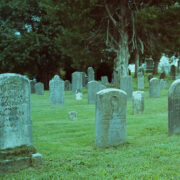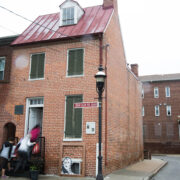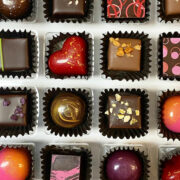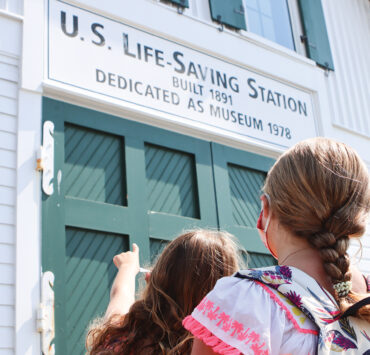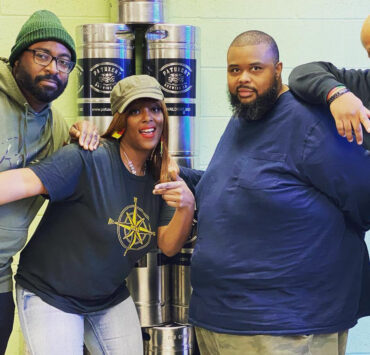The Brilliant Booze of Maryland (Part 1): Rooted in Rye
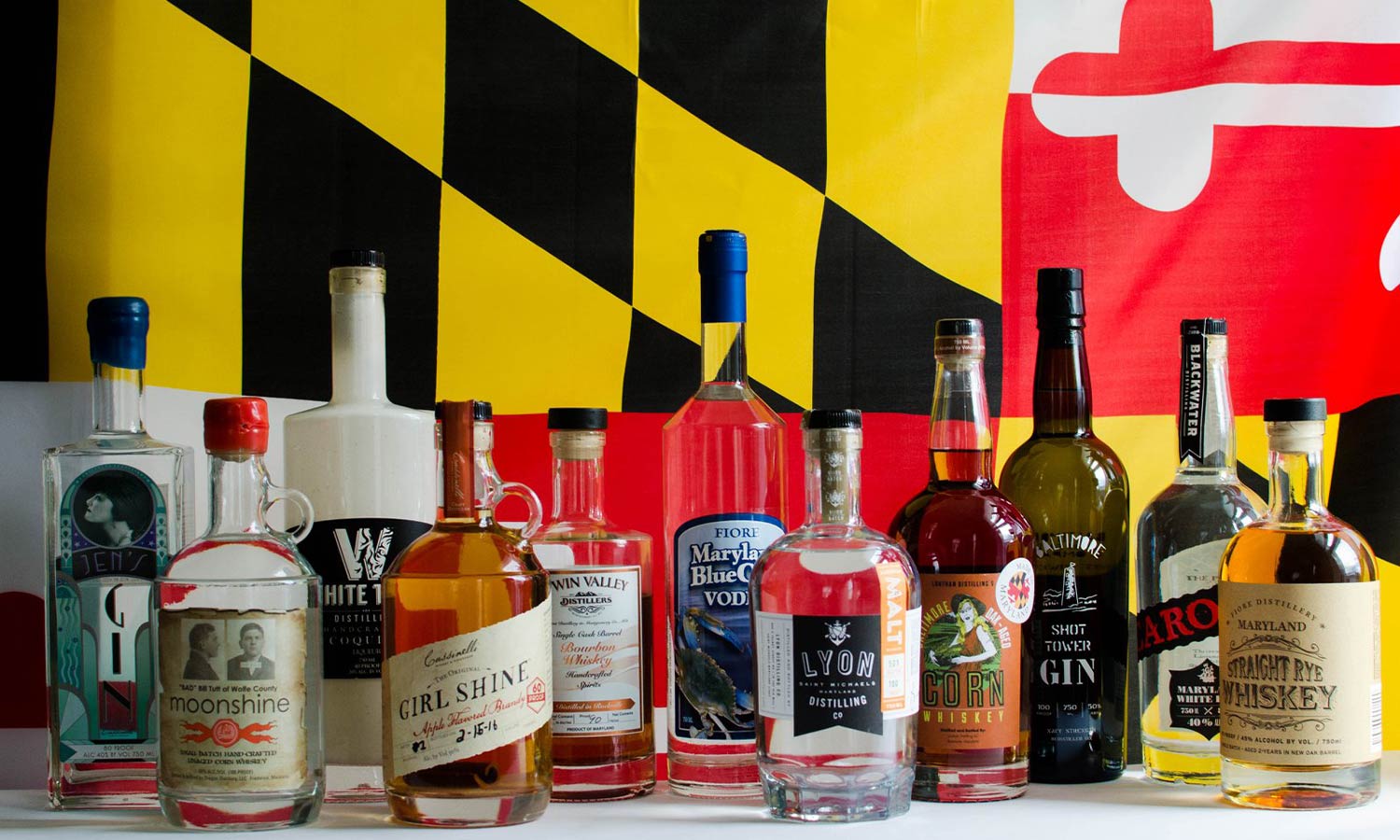
On a spring Tuesday in 1745, a group of tipplers met in Annapolis.
Over punches and whiskies, Alexander Hamilton (not that one) put down the purpose of what would become known as the Tuesday Club:
These Gentlemen then, meeting upon Tuesday the 14th day of May, in the Year 1745 . . . formed and erected themselves into a club which they called by the name of the Tuesday Club. They met first at the Lodging of Doctor Loquacious Scribble (i.e. Hamilton), who first exercised the office of Steward and Chairman to the Club, and the Candles being lit, the punch made, and the pipes fairly set a going, after two or three rounds of the punch bowl, they applied themselves to make and pass some wholesome Laws for the good government and regulation of the Society. . .
- National Humanities Center, 2009: Dr. Alexander Hamilton, The History of the Ancient and Honorable Tuesday Club
This was not the first – nor would it be the last – instance where a love of spirits, conviviality, and fellowship brought the residents of Maryland together.
Welcome to a new regularly occurring series here at Maryland Road Trips where we draw a line from Maryland’s booze-soaked past to the current craft distilling Renaissance.
(Kentucky? Tennessee? Nothing but wee babes in the shadow of Maryland!)
In this first article, we’ll take an abridged look back on Maryland’s pre-Prohibition distilling legacy. The following articles will focus on distinctive areas within Maryland that have embraced the modern craft/microdistillery movement.
You’ve heard of the Kentucky Bourbon Trail? Well, think of us as your guide through the Maryland Spirits trail, but on an even more micro-level. We’ll bring you information on each of the active distilleries throughout Maryland, their backstory and products, and even create our suggested day trip agenda for each of the areas.
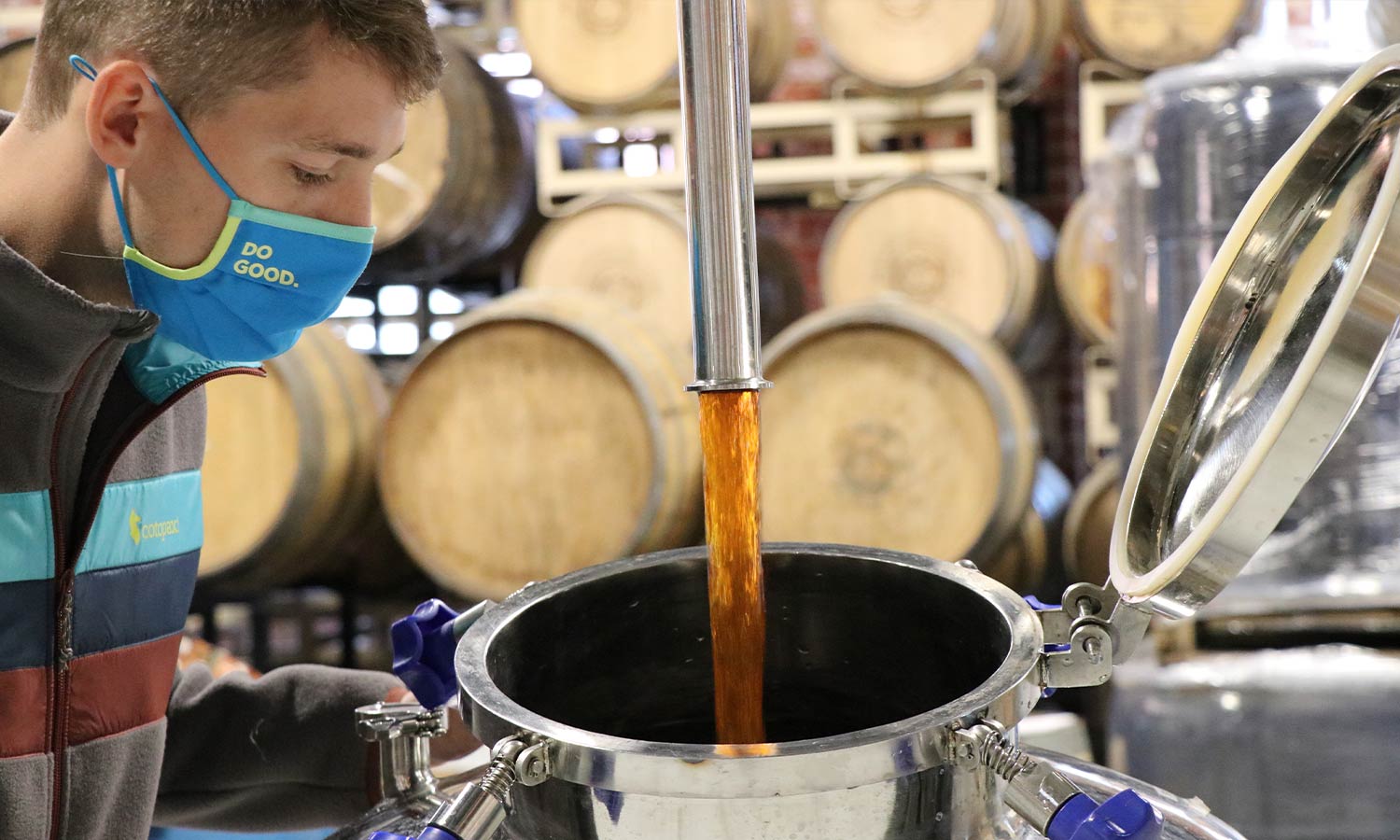
From Field to Farmhouse
The apple has become so commonplace within Maryland that it can be easily overlooked in how important it was in the drinking lives of colonists across the Mid-Atlantic.
North American apple harvesting began with the settlers at Jamestown, Virginia in 1607. They brought with them seeds and cuttings from Europe, and while the original varieties planted were not all suited for cultivation in the New World, their seeds began to produce all-new varieties of American apples.
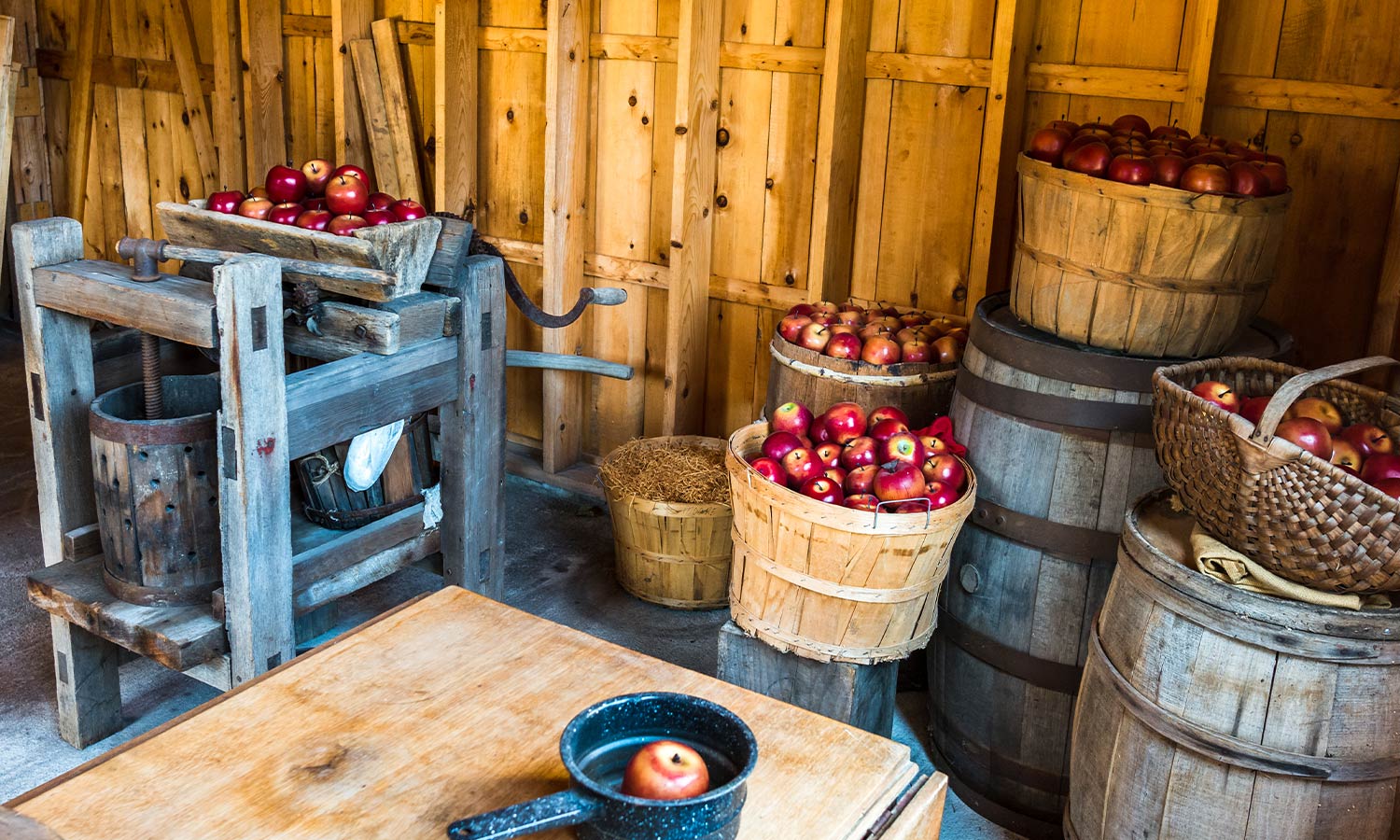
These apples were incredibly bitter and not quite fit for human consumption. Most colonists grew their own apples, and due to sanitation concerns, they often served a fermented cider at meals instead of water, including a diluted cider for the children.
In 1631, the first European settlement in Maryland was established by English fur trader William Claiborne. In 1632, English King Charles I gave George Calvert a royal charter for the colony of Maryland. By that point, apple trimmings from the northern Colonies had already begun to trickle down and orchards were established.
Fermenting these “spitter” apples meant that they would last longer than their fresh progenitors. Distilling the excess cider meant that they would last even longer — thus saving both space and wasted produce. Enterprising farmers in the colonies took advantage of the harsh winters by placing hard cider out in the cold weather.
As the cider froze, they would scoop out the ice, leaving the concentrated alcoholic solution behind. The more times it froze, the higher the concentration of alcohol. This process was called “jacking.” As distilling technology became increasingly accessible to colonial farmers, they were able to produce a safer, more marketable product.
We haven’t been able to track any records of historic Maryland distilleries producing a commercial version of Applejack — pretty much everything we see was rye whiskey production. We know from historic records and from comparing similar records from the Mid-Atlantic and New England that farmers often produced Applejack for personal consumption.
And a Bottle of Rum
Before whiskey became prevalent, it was actually rum that demanded the attention of most of Maryland’s drinkers during the state’s colonial era. Most of this came from Massachusetts and Rhode Island, making up the infamous molasses-rum-slaves triangle.
However, in the late 1770s increased taxes and a naval blockade made rum inaccessible except for the most well-heeled Marylander.
Thankfully, rye grain was plentiful, and the immigrants from Scotland and Ireland that had become farmers in Maryland also brought with them the knowledge to distill what they were already growing.
Well, Rye Not?
Hit the fast-forward button, and we reach the 1800s. Larger non-personal commercial distilleries begin popping up across Maryland. By this point, consumers had moved away from the more expensive and labor-intensive Applejack to the much more affordable grain whiskies that Scottish and Irish immigrants had learned in their homeland before immigrating to the United States.
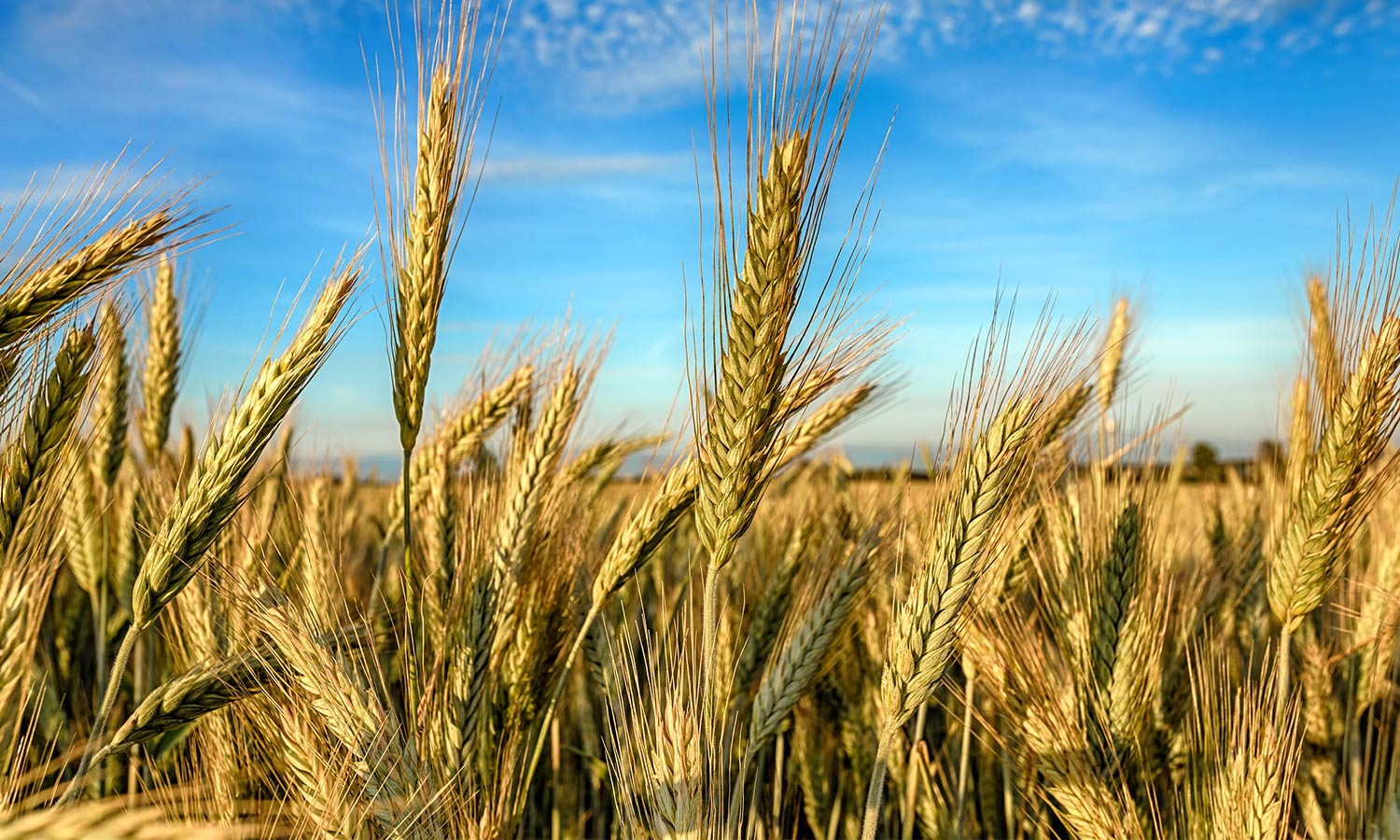
Midway through the 19th Century, Maryland boasted 44 distilleries, each one making whiskey. Rye was the first recorded whiskey distilled in the U.S. (noted in 1640 in the tiny New Netherland settlement on what is now Staten Island). However, Maryland and Pennsylvania are the places most associated with the spirit.
Maryland distilleries specialized in a unique style of rye whiskey which eventually became known as… Maryland Style Rye.
Clever, right?
Not as spicy and pepper-forward as the high-rye Pennsylvania Rye whiskies (also known as Monongahela), Maryland Rye boasted a softer and nuanced pallet. Unfortunately, much like a large swath of spirit and cocktail history, no one can exactly define what constituted Maryland Style Rye Whiskey. Beliefs fall to two camps – mash bills with large amounts of corn alongside the rye or mash bills with large amounts of barley.
Either way, the style was distinctive enough that it led to Maryland’s position as one of the top whiskey producers in the New World. That is until prohibition came in and began to cull countless industrial whiskey distillers from the herd. The survivors of prohibition were largely relegated to swaths across the south and Midwest. Maryland’s time in the (moon)shine was gone.
Or so we thought.
Tune in next time as we take a closer look at the blossoming Maryland Craft spirits movement, and how our once proud whiskey state is reclaiming its former title.

Lead Photo: Maryland Distillers Guild
About the Author
Mark A. Vierthaler
Mark A. Vierthaler is the Head Distiller at Whiskey Del Bac in Tucson, Arizona. He's also a former Marylander who left a part of his heart in the Old Line State. He has won over a dozen international awards for spirits he has made and was a finalist for the inaugural Icons of Gin from the UK-based Gin Magazine. He lives in Tucson with his wife Jenn, silver lab Moose, tabby cat Rump Roast and the occasional javelina & coatimundi that wanders into their backyard. He also makes a point to take in as much craft as possible when he travels back to Maryland. Follow his cooking, mixology and distilling misadventures @WhiskyIcarus on Instagram.






